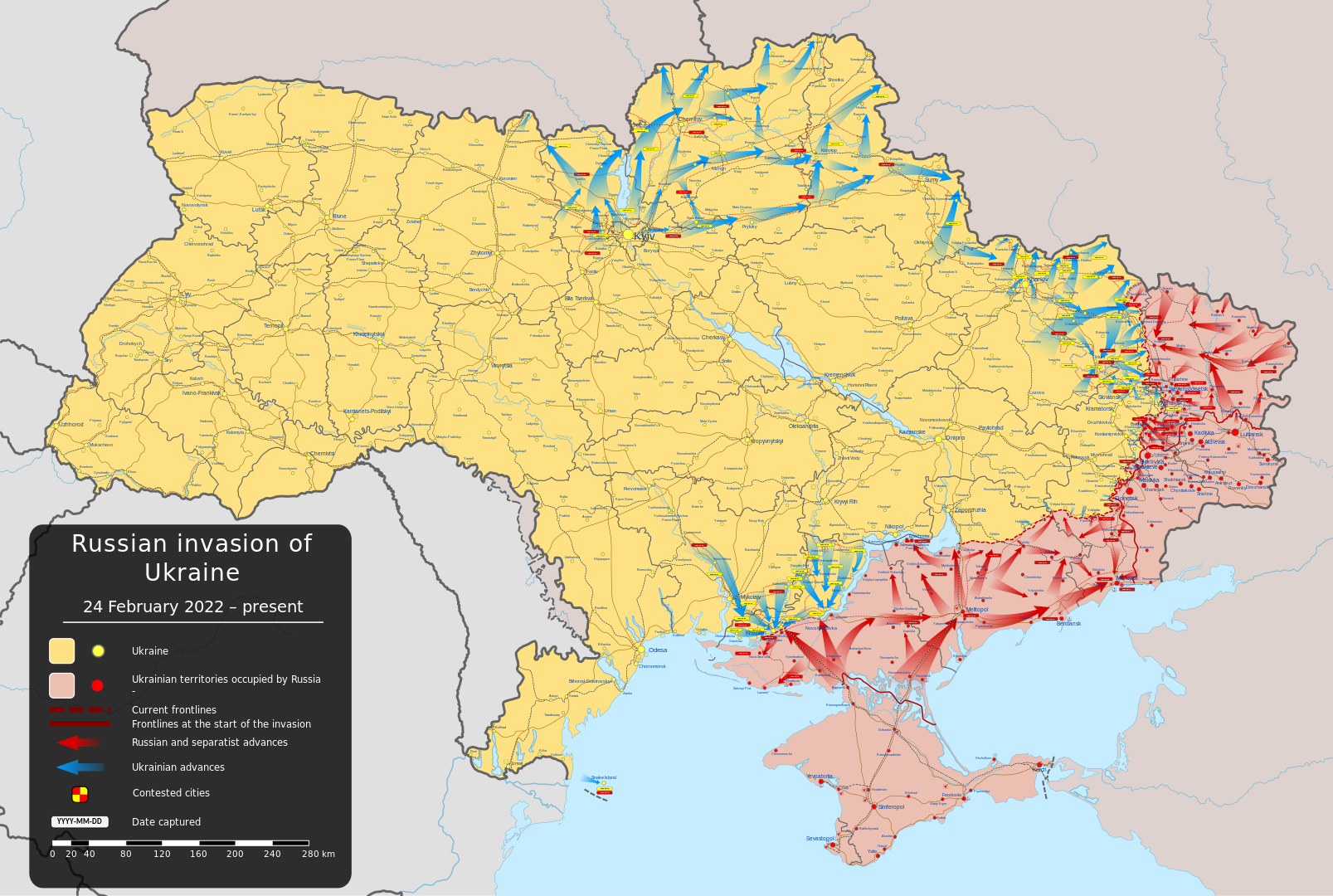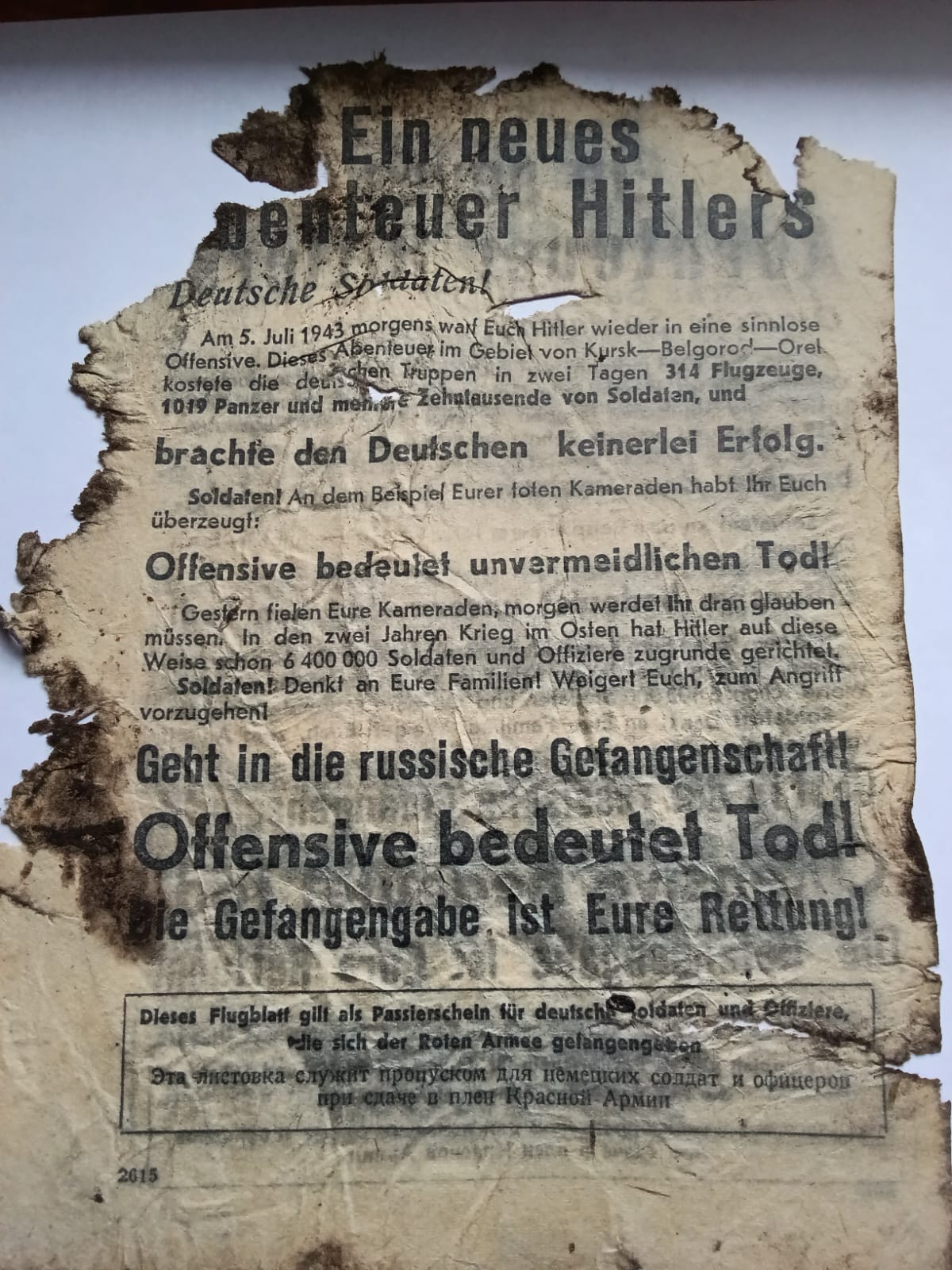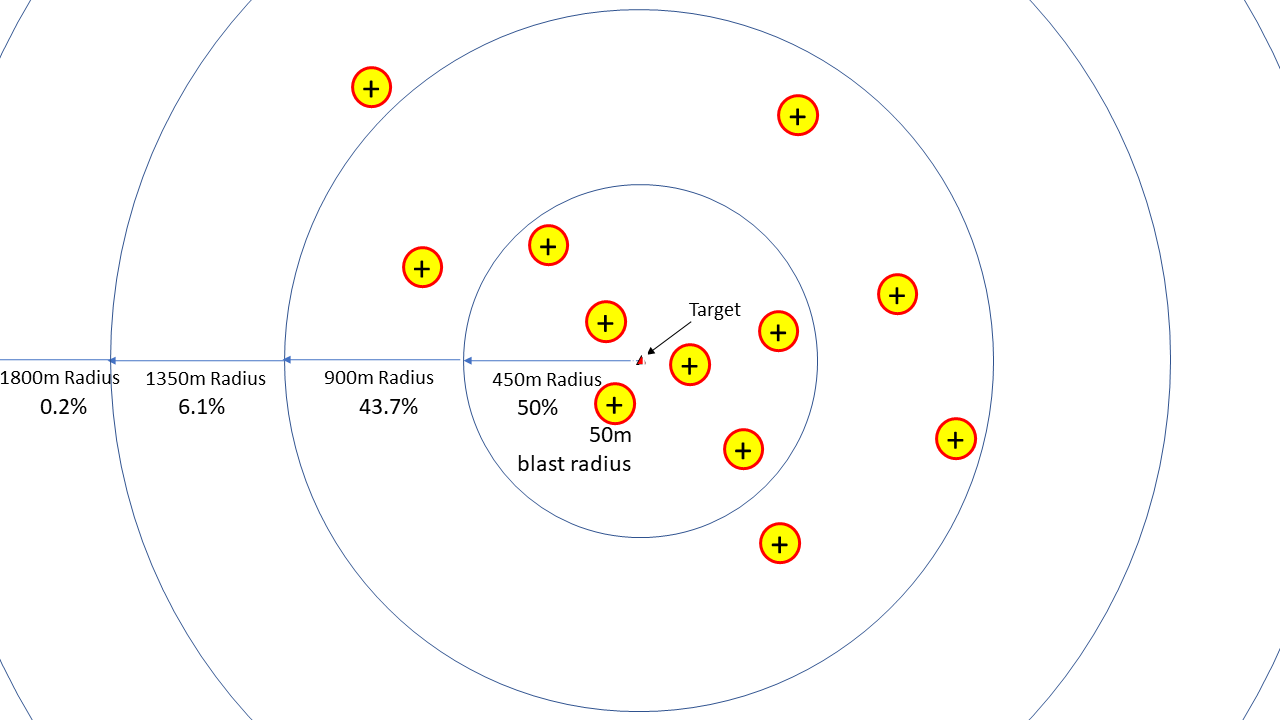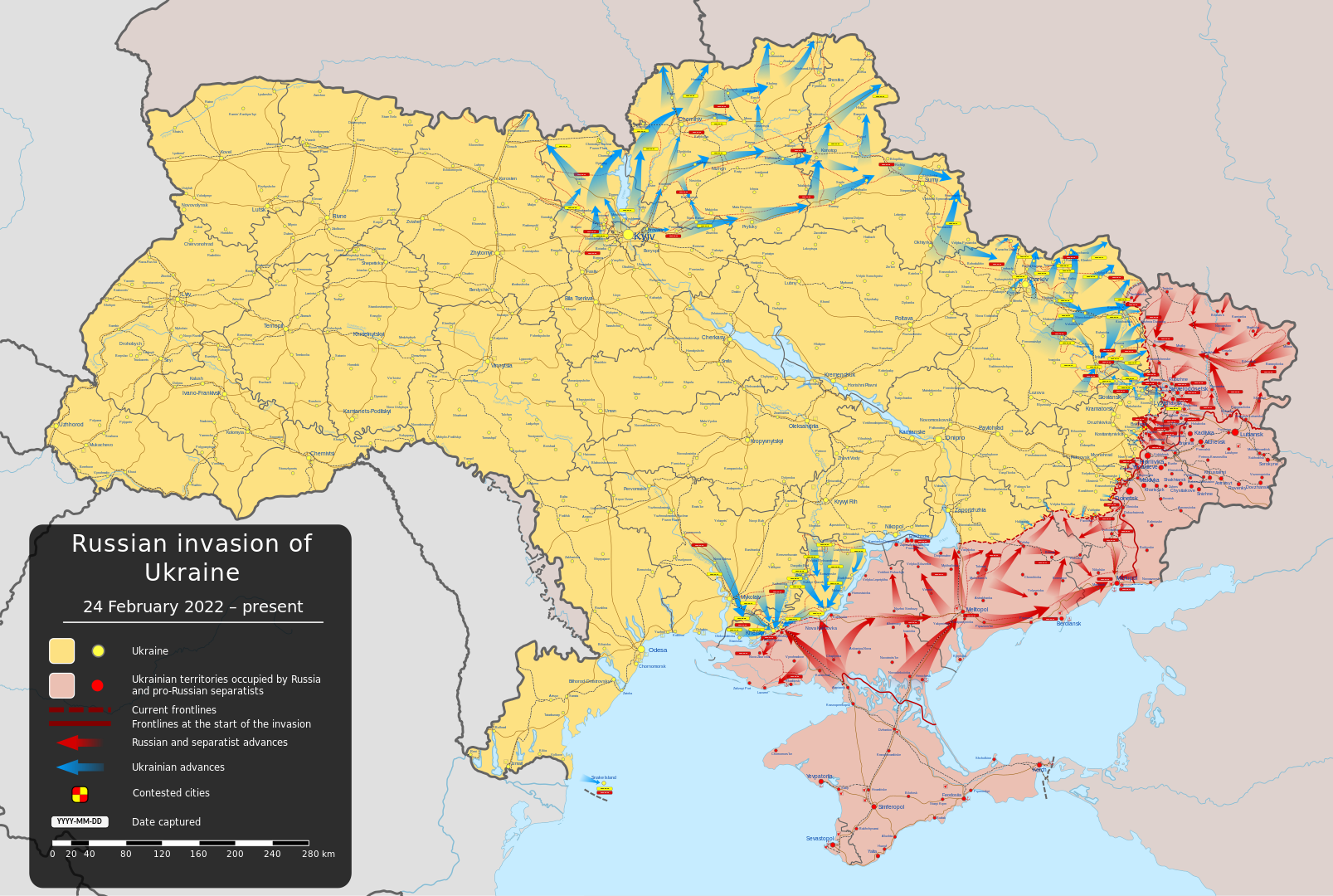Bakhmut was clearly completely under Russian control by 24 May. Ukraine is making small advances around the outside of Bakhmut. The Wagner Group is withdrawing from Bakhmut and handing their prize over to the Russian Army. They sort of accomplished what they said they would, but it took them many months and some heavy casualties. The head of the Wagner Group has said he lost 20,000 killed.
Meanwhile a group of Russians invaded Russia. The cross-border attack into Belgorod province started on 22 May and lasted a couple of days. The invasion force appears to have consisted of 4 MaxxxPro MRAPs and two HMMWVs. Maybe two or three dozen riders. One MRAP and one HMMWV were captured while the Russian invaders captured a BTR-82A. They basically got to Grayvoron (pop. 6,179 – 2021 census), which is only 10-15 kilometers from the border in the SW corner of the province. It is to the NW of Kharkiv. This action was not militarily significant but was politically so. Not only did it show that the considerable Russian border with Ukraine was undefended, but more significantly, Russia did not have a reserve maneuver battalion available to respond to the invasion within 12 hours of it. This is kind of surprising. It appears that they have committed all their maneuver battalions to Ukraine and have little spare. One wonders what would happen if Ukraine invaded Belgorod province with some of the 12 brigades it is holding back for the spring offensive? Anyhow, the Freedom of Russia Legion (it claims to have two battalions) said they lost no one in this operation, while Russian is claiming they killed 70. I will go with the first estimate on this one. The neo-Nazi Russian Volunteer Corps was also involved and had previously conducted the raid in Bryansk province in March 2023.
25 May the Russian 4,000 ton SIGINT intelligence collection ship, the Ivan Khurs, was hit in the Black Sea by Ukrainian drone boat. Any damage appears to be minor.
The classified Joint Staff briefing book did talk about 12 “combat credible” brigades being generated for the “spring counteroffensive.” They report on the status of 9 new brigades being raised (“trained and equipped by US, Allied and Partners”). Six will be ready by 31 March (page was dated 23 February) and 3 by 30 April. Eight of these newly raised brigades are mechanized-like brigades, which nominally have one tank battalion of 31 tanks per brigade. A NATO rep. said in late April that 98% of the vehicles scheduled are now in Ukrainian hands. This is a very qualified statement.
The U.S. has announced on 21 April that it will began training Ukrainian forces on their new Abrams tanks. The 31 tanks will arrive in Grafenwoehr at the end of the May and the training will last for around 10 weeks. On 28 April the Germans are saying that over 100 Ukrainians are now training on Leopard Is (the older version). That does indicate that some of these newly raised Ukrainian brigades are still going to receive more equipment. So while the weather may be clear in early May, that does not mean that Ukraine will initiate a major offensive operation in May. One notes that Zelenskyy is now saying they are waiting until fully prepared.
I will put any changes/updates since my last post in italics. A link to a blow up of the map is here: Wikipedia map. It is dated 2 June. The last dated update on the map is Soledar on 16 January, although they are showing Bakhmut in Russian hands.
Russia currently occupies five cities: Lysychansk (pop. 95,031), Severodonetsk (pop. 101,135), Mariupol (pop. 431,859), Berdyansk (pop. 107,928) and Melitopol (pop. 150,768). Kherson (pop. 283,649) was retaken by Ukraine on 11 November.
We have been looking at six major areas of operations. Only the Donbas appears to be active right now.
1. Kyiv (pop: 2,962,180): It appears that Kyiv is secure.
2. Odesa (pop: 1,015,826): Appears to be secure. The grain deal has been renewed for another 60 days. Since the start of these deals, the shipments have resulted in over thirty million tons of grain shipped by sea. As of 01 June, the amount of grain shipped from Ukrainian ports and across the Black Sea under this initiative was 30,596,101 metric tonnes carried in 958 ships according to posts on twitter by @exit266. There are 46 days left to the agreement.
Russia is claiming that they destroyed the Ukrainian 1,192-ton landing ship Yury Olefirenko, which is supposed to be Ukraine’s last warship. It was launched in 1970.
3. Kharkiv (pop: 1,433,886): Kharkiv looks to be secure. Still, it is near the Russian border, so this can change suddenly. Ukraine did bombard Russian troops in the village of Tsapovka in early April, in Russian territory in the Belgorod Oblast. Ukraine published pictures of this. It is right on the border, due south of Borisovka. The village is reported to be unpopulated since 2013.
On 17 April, the Ukrainians did attack two Russian power stations in Belgorod oblast using drones. The following week the Russians also accidently dropped two bombs on Belgorod. On 1 May, a Russian ammo dump was hit near Tomorovka, in Belgorod province.
4. The Donetsk and Luhansk provinces (the Donbas): Complete write-up is available in this post: The Russo-Ukrainian War – Day 355 | Mystics & Statistics (dupuyinstitute.org). The Donetsk People’s Republic (DPR) is reporting as of 16 December that they had 4,133 soldiers killed and 17,379 wounded (4.20-to-1 wounded-to-killed ratio). This includes the 13 killed and 50 wounded reported from 01.01.22 to 02.25.22. For the period of 16 – 22 December (overlapping dates on 16 December) they report 43 killed, but do not report the wounded. Through the 16th, this is 108% casualties out of an estimated initial force of 20,000. Lugansk People’s Republic (LPR) is reported as of 5 April to have had 500-600 killed out of an estimated force of 14,000. This is 21% casualties, assuming a 4-to-1 killed ratio.
5. Mariupol (pop: 431,859): Complete write-up is available in this post: The Russo-Ukrainian War – Day 355 | Mystics & Statistics (dupuyinstitute.org). Google maps has updated its images of Mariupol to show the city as it is now (extensively shelled) vice how it used to look before the war.
Prisoner Exchanges: Russia has claimed that they captured 2,439 prisoners from the siege of Mariupol. Russian claimed on 30 June that they held 6,000 prisoners. Ukraine stated in early July that they had more than 7,000 missing. Now Ukraine is stating as of 30 December that Russian holds 3,400 prisoners and 15,000 Ukrainians are missing.
In 2022 there were 1,447 prisoners of war exchanged, 112 civilians and five foreigners. Of those, at least 427 were from Mariupol/Azovstal and up to 53 others were killed in captivity. Latest prisoner exchange on 8 January was for 50 prisoners. Another prisoner exchange on 4 February of 116. Some of these Ukrainian prisoners had been in captivity for almost a year. Latest prisoner exchange, on 16 February, was for 100 soldiers and one civilian for 101 Russian soldiers. 94 of them were defenders of Mariupol, including 63 soldiers from Azovstal. There was another prisoner exchange on 7 March with 130 Ukrainians exchanged for 90 Russians. This included 87 Mariupol defenders (71 from Azovstal). 35 of them were soldiers captured in Bakhmut and Soledar. Most of the Ukrainian and Russian prisoners were seriously injured.
The Ukrainian Omsbudsman has stated in late January that 800 severely wounded Ukrainians are held as POWs. He also stated that they hold 200 severely wounded Russians.
There was a prisoner exchange in early May of 42 soldiers and two civilians for what I assume was a similar number of Russians. On 7 May, Russia exchanged 45 defenders of Azovstal, including 10 officers for only just 3 pilots. I gather Russia is still holding thousands of more prisoners than Ukraine does.
6. Crimea & Kherson (pop: 283,649): Kherson is now back under Ukrainian control as of 11 November. Complete write-up is available in this post: The Russo-Ukrainian War – Day 355 | Mystics & Statistics (dupuyinstitute.org).
The early morning on 22 March (at 04:43:58 according to videos), there was another attack on Russian ships in Sevastopol harbor using seaborne naval drones. The last time they tried this (29 October 2022), they (lightly?) damaged the 4,035-ton frigate Admiral Makarov. It appears that one got close to one rather large ship and exploded near its rear. Not sure if a Russian ship was damaged. At least three drones were used in the attack. One was stopped by the booms at the entrance to the harbor, and two were destroyed in the harbor.
There was also a car blown up on 23 March in Melitipol that injured a Ukrainian accused of collaborating with the Russians. There was an IED exploded in Melitipol on 3 April.
Apparently, back in October, in conjunction with the Kherson offensive, there was a failed attempt by Ukraine to retake Zaporizhia nuclear power plant with an amphibious operation across the large reservoir there.
There was Ukrainian crossing on 20 or 21 April at the village of Dachi. This is just across the Dnipro near Kherson where the damaged Antonivka Road Bridge crosses.
I do think this is a diversion, vice the preparation for a major offensive. The problems with conducting operations across the Dnipro work both ways. The Russians were forced in November to withdraw from north of the river because of supply issues. There are only three bridges across the river in the best of times. If the Russians could not support 20,000 troops to the north of the river, I suspect the Ukrainians will have a similar problem south of the river, especially as Russia has air superiority.
The Ukrainians two weeks ago hit three oil tanks in and around Crimea (one near Sevastopol early in the week, one in Krasnador province on 2 May that was only 7 km from the bridge to Crimea, and another attack on 3 May in Krasnador near the bridge). Also on 29 April it is claimed that the Russian village of Suzemka was shelled. It is 6 miles (10 kilometers) from the border in Bryansk province. The Russians report two, and later four civilians killed. On 2 May a train was derailed by a bomb near Bryansk. Finally, two drones attacked the Kremlin in Moscow on 4 May, with one hitting a flag on a dome.
Weather: Kharkiv at 4 PM: It is 79 degrees (26 Celsius) and sunny. Rain is expected on Saturday and following Saturday. Sunrise is at 4:29 and sunset is at 8:36, giving them more than sixteen hours of daytime to operate it.
Kherson is 80 degrees (27 Celsius) and mostly sunny. No rain is expected for the next ten days.
Ukrainian Army Build-up: Complete write-up is available in this post: The Russo-Ukrainian War – Day 355 | Mystics & Statistics (dupuyinstitute.org).
Do not know the current strength of the deployed Ukrainian Army but am guessing that it is over 300,000 deployed troops. They clearly are going to have to build it up to 400,000 or more in response to Russia’s partial mobilization. There is a Ukrainian Territorial Defense Force of 100,000 to 200,000. Wikipedia was reporting 209,000 in their armed forces and 102,000 paramilitary. They were reporting their ground forces at 198,000 in July 2022.
Do not have a good estimate of the total number of foreign volunteers now in Ukraine, although it is clearly thousands.
The U.S. and many countries in and around Europe are now providing tanks to Ukraine. This includes 31 Abrams (M1A2) from the U.S. that were not expected to arrive until 2024, but the U.S. has now announced that they will be in Germany as of the end of May. It also includes the previously announced 40 AMX-10 light tanks from France, the previously announced 14 Challengers from the UK and 14 new Challengers from the UK, 14 Leopards (2A6) from Germany announced on Jan. 25 plus they are going to provide 14 more later, 14 or so Leopards (2A4?) from Poland, maybe 20 Leopards (2A4) from Spain, but so far only 6 have been confirmed (they are planning to train 55 Ukrainian crew members), no Leopards from Netherlands (previous rumors said 18), Portugal is sending 4 (2A6) out of their 37, 8 (2A4) from Norway out of their 36, and 8 2A4 Leopards from Canada out of their 80. The 8 Canadian Leopards have already arrived in Poland. Non-NATO members Finland is providing 3 Leopards and Sweden is providing 10 2A6s along with 8 Archer 155mm SP Artillery. Also, Morocco is providing Ukraine with 173 T-74s EA, 70 are already in Ukraine. It does appear in a number of cases the announcements are lagging behind the actual shipments of tanks. Poland is providing Ukraine with another 60 upgraded T-72s. It has already sent Ukraine some 260 or more tanks.
Twelve countries in NATO have Leopards. Germany is saying that a total of around 80 will be sent between them all. My count currently shows at least 77 Leopards from eight different countries (two not yet in NATO). It now looks like many of the older 40-45 ton German Leopard Is are being refurbished and will be sent. Germany has 88 of them it could send and Belgium has 50. Between Denmark, Netherlands and Germany, they are putting together a package of 100 1A5s, although the details of the deal keep changing. It will be a while before most of them arrive. An initial package of 29 is being refurbished and are supposed to arrive in the summer (enough for one more brigade). There are a lot of them out there, with Greece supposedly having 520 (and 392 U.S. M-48s and 100 U.S. M-60s) and Turkey having 355 or 397 (and 750 M-48s and 785 M-60s). Opportunity to replace old stocks. Switzerland has 230 Leopard 2 tanks of which 96 are not in operation (in storage). Germany has asked for them but on 7 March the Swiss Parliament voted not to export tanks. Meanwhile reports are saying some of the 100+ Leopard Is will still arriving in Ukraine starting May. Meanwhile, the U.S. is now planning on providing older M1A1s instead of M1A2s are it can be arranged to get there this fall. Not sure if the count of tanks provided will remain at only 31 (one battalion’s worth).
Meanwhile, Russia has been seen transporting T-54Bs from Siberia to somewhere (probably Ukraine). That particular model dates from 1955, so a little older than a Leopard I or M1A1. On 30 April, T-55s and T-62 were reported in the Berdiansk area.
From a practical point of view, it means that around four or so Ukrainian tank battalions will be armed up with Abrams/Leopard 2/Challengers. Ukraine has over 30 tank battalions. Some should probably be in place for the spring offensives. Some of the Canadian Leopard 2s have already arrived in Poland. At least 18 of the Leopard 2A6s have arrived in Ukraine. Challengers will be arriving in Ukraine during March.
Slovakia announced on 23 March that they have transferred 4 MiG-29s to Ukraine. It now appears that all 13 Slovak MiG-29s have been handed over to Ukraine. On 8 May, it was confirmed that 10 Polish MiG-29 have been delivered to Ukraine. On 5 May, it was confirmed that Croatia is providing 14 Mi-8 helicopters, of which 9 are already in Ukraine. Looks like Ukraine will be receiving F-16s also. Numbers to be determined. It may be six or more months before they are operational.
Some weapons have been supplied that have not been announced. For example, Finnish ex-Soviet 152K89 152mm field guns recently have showed up on the battlefield in Ukrainian hands, even though Finland has never announced that they were being provided. Danish artillery has also recently showed up in Ukraine.
Russian Army Build-up:
In the fall of last year, Ukraine was reporting that around 280,000 Russians were deployed in Ukraine. This seems a reasonable estimate. On 4 November Putin stated at 318,000 reservists and “new volunteers” have been mobilized and 49,000 are in combat zones. I assume the Russian army in Ukraine was at about 200,000 at the start of this mobilization.
The U.S. and UK estimate that the Wagner Group had 50,000 people in December 2022. Have no idea if this estimate is accurate. John Kirby (U.S. DOD spokesman) said that Wagner has lost 30,000 people, at a wounded-to-killed ratio of maybe 2-to-1, implying 10,000 deaths. Around 20 May, the head of the Wagner Group said they had lost 20,000 killed. We have doubts about the accuracy of Prigozhin’s claims.
Ukraine stated on 22 Feb. that Russia has deployed more than 350,000 troops to Ukraine. This sounds about right.
Russia is now starting its spring conscript draft of 147,000. It does this twice a year. Conscripts are for one year and are not allowed to serve outside of Russia.
The Russian defense budget for 2023 is $159 billion, up from $111 billion in 2022. This appears to now be around 9% of GDP.
According to one article, which I suspect is a little biased, Russian tank production at Uralvagonzavod is currently over 900 armored vehicles a year, including 35-40 T-90s a month. In contrast, the U.S. is producing two M-1A2 a month in Lima, Ohio. The German Leopard 2 is also still in production.
Russia is getting some support from China, possibly spare parts and more important, microchips. They are reportedly not currently providing Russia with weapons. This is a source of discussion between the U.S./EU and China.
As of 26 February, Russia has announced that the DPR has raised a new battalion entirely composed of Ukrainian prisoners of war, called the Bohdan Khmelniksky Battalion. It was claimed that the unit consists of 70 Ukrainians.
Opposing forces: Ukraine had before the war an army (ground forces) of 169,000 in 2016. The Russian army (not armed forces) was 280,000. The current Ukrainian army is now probably over 200,000. The Russian army (ground forces) in and around Ukraine is probably around 150,000 (up to 190,000). Donetsk PR is estimated at 20,000 and Lugansk at 14,000. Russia has added at least 41,000 troops to the front line from their new partial mobilization effort and will be adding more. Potentially up to 300,000. Most likely by the spring, both armies will be sporting 400,000 or more troops. It does appear that by spring, the level of intensity and casualties from this war will be a count twice as high as it currently has been.
Economics and the Home Fronts: The complete write-up is available in this post: The Russo-Ukrainian War – Day 380 | Mystics & Statistics (dupuyinstitute.org). Price of oil (Brent Crude) remains low at 75.68 as of 9:16 AM EST. Ruble remains low at 81.08 to the dollar.
On 6 May “right-wing” activist, Yevgeny Prilepin, was seriously injured near Nizhny Novgorod when his car was blown up. His bodyguard died. On 2 April, Vladlen Tartarsky, 40, a pro-war Russian blogger, was assassinated in St. Petersburg. The accidental assassin, who was also wounded, was Darya Trepova, 25. The previous war-related assassination was of Darya Dugina, 29, back on 20 August 2022. Not sure who was responsible for any of these three efforts.
Casualties: The commander-in-chief of the Ukrainian miliary, Valerii Zaluzhny, on 21 August stated that almost 9,000 Ukrainian military have died in the war. This is a lower estimate than most people have given (although we have leaned towards the lower estimates). Not sure if these figures included militia losses (like Azov Regiment). If Ukraine lost almost 9,000, then hard to believe the Russian losses are that much higher. On 1 December a presidential advisor stated that Ukraine has lost between 10,000 and 13,000 troops killed. On 17 March, the Ukranian Secretary of the National Security and Defence Council argued that total Ukrainian losses are less than 100,000 killed and wounded. As of 24 March 1,509 bodies have been returned to Ukraine.
The U.S. estimate is that Russian casualties are now at 220,000 (killed and wounded). The U.S. estimate provided on 9 November was “well over 100,000.” Did they really loose another 100,000 troops in the last five months? For 18 November BBC/Mediazona reported that 9,001 Russians had been killed based upon media accounts, obituaries, funeral notices, and so forth. Now their count is 18,023 as of 24 March. This is a doubling of their recorded count of people who have died. This is still considerably lower than the Ukrainian claims of 173,360 Russians killed as of 31 March (which would imply 693,440 to 866,800 total casualties, which does not mesh well with the reports of forces deployed). I do have some doubt about this suddenly increase in U.S. claims, see BBC/Mediazona Figures Over Time | Mystics & Statistics (dupuyinstitute.org) and Russian Losses over Time | Mystics & Statistics (dupuyinstitute.org). Needless to say, if I have doubts about the U.S. DOD estimates, then I don’t buy into the Ukrainian claims of Russian casualties, or the similarly high Russian claims of Ukrainian casualties.
The various versions of the briefing books did have Ukrainian and Russian casualty figures. They estimated that Ukrainian losses were 15,500 – 17,500 killed and 124,500 – 131,000 total casualties. This estimate may be a little “light,” but it is certainly within the ball park. They appear to be using a wounded-to-killed ratio of around 7.5-to-1 for this. This is kind of high. These figures may also include missing and captured (at least 6,000 were captured).
The Russian estimates are 35,500 – 43,000 killed and 189,500 – 223,000 total casualties. This may be on the high side. Ukraine is claiming over 180,000 Russians killed, which I think can be dismissed. BBC/Mediazona reports as of 7 April are counting 19,688 Russian killed by name. They appear to be using a wounded-to-killed ratio of around 5-to-1 for this.
Mediazona, through Dr. Olga Ivshina (BBC) @oivshina stated on 25 April that “…if we have 20,000 names we think the real toll may be around 40,000 KIA.” The exchange is here: The Dupuy Institute (TDI) on Twitter: “@oivshina Question: Do you mean that you suspect the actual count of dead is 1.5 times the count on your list, or is it 2.0 times the count on your list?” / Twitter.
These wounded-to-killed ratios open up a lot of questions. 1) why are they different for the Ukrainian vice the Russians, 2) I have been saying it is at least 4-to-1. They are using figures higher than that. What is that based upon?, and 3) some people on the “twittersphere” have criticized me for even using a 4-to-1 ratio and have used lower figures than that. Is it time for them to revise their estimating practices?
John Kirby, the NSC spokesman, said on 1 May that Russia has suffered 100,000 casualties since December, including over 20,000 killed (implying a 4-to-1 wounded-to-killed ratio). Half of the killed are from the Wagner Group.
The previous, more detailed older casualty write-up is available in this post: The Russo-Ukrainian War – Day 394 | Mystics & Statistics (dupuyinstitute.org).
The UN is reporting as of 15 May at least 8,895 civilians confirmed dead in the war. They reported 138 civilians killed from 1-28 February and 178 for 1-31 March and 169 killed from 1-30 April.
The UN provided the following chart showing civilian losses by month:

More than 50,000 people have died in this conflict: 22,644 or more (Russian Army – Mediazona count) + 16,000 or more (Ukrainian Army – U.S. DOD estimate) + 8,895 (Civilians) + 4,176 (DPR in 2022) + 600 (LPR) = 52,315. It is probably in excess of 60,000 total deaths depending on Ukrainian and Russian military deaths and the real count of civilian losses. Suspect the BBC/Mediazona count is off (undercounted) by at least 50% and they say it is by a factor of two. The last figure from Ukraine of 13,000 was dated 1 December, so is also now probably off by at least 50%. Mediazona is now reporting that Donetsk and Lugansk losses were in excess of 8,000.
An eighth American has been killed in Ukraine, Nick Maimer, 45, of Boise. He was a former Green Beret who was training Ukrainians. He was hit by artillery sometime in May.
Ammo: The second and third to last paragraphs in The Times (UK) article referenced in the Day 394 blog post says:
However, Barrons argues that Ukraine needs ammunition even more than it needs soldiers. It fires 90,000 155mm shells a month and sometimes 6,000 shells a day but combined US and European production is less than 30,000 a month. “There is a mathematical mismatch,” he says. The US is tripling its output but “Europe has been too slow”.
Russia, which has been firing 20,000 shells a day and is thought to have used up ten years’ worth of production in 12 months, has the same problem. In recent weeks they have reduced the numbers by 75 per cent.
So 6,000 shells a day vice 20,000 shells a day, have no idea if that is true or what percent of the rounds fire are “smart” versus old style. One would expect the side firing the most rounds would be causing more causalities. On the other hand, if U.S. production is less than 30,000 a month Ukraine will be forced to eventually reduce their expenditures to 1,000 or 2,000 shells a day. If Russia has to reduce their numbers by 75%, then they are firing 5,000 shells a day. Don’t know if any single number in this discussion is close to reality but suspect that both sides will have to reduce their artillery expenditure at least until May. This war could be very quiet for a couple of months.
Anyhow, Ukraine is requesting 250,000 shells a month from the EU.
Air Power: Previous discussion of air power is in the Day 443 post: The Russo-Ukrainian War – Day 443 | Mystics & Statistics (dupuyinstitute.org).
On 13 May, Russia lost 4 aircraft in one day, two Mi-8 helicopters, one Su-34 and one Su-35. This was their highly daily losses since the first month of the war. They were shot down just inside of the Russian territory, in Bryansk province.
Missile Defense: Discussion of previous missiles attack is in the Day 443 post: The Russo-Ukrainian War – Day 443 | Mystics & Statistics (dupuyinstitute.org). It is clear that the Russian attempt to cut off Ukrainian power and freeze them out over the winter has failed and they have not done any of those massive missile strikes since 9 March.
There has been some increase in airstrikes and drone attacks this month, partly in response to Ukrainian strikes, but nothing that looked like a major strike. The last major Russian airstrike was on 9 March. The previous one was on 10 February. Meanwhile, on 4 May a Russian hypersonic missile was reported to have been shot down by a Patriot missile. This was not supposed to be possible.
Attack on Kyiv on 15/16 May result in 18 out of 18 attacking claimed to have been shot down. One Patriot launcher was damaged. The Patriot missile battlery was the target of the attack.
End of the War: Looks like this war will be continuing onto until at least fall of 2023. Completer write-up of this section is available in this post: The Russo-Ukrainian War – Day 380 | Mystics & Statistics (dupuyinstitute.org).
Atrocities: Complete write-up is available in this post: The Russo-Ukrainian War – Day 355 | Mystics & Statistics (dupuyinstitute.org).
Russia continues their display of Orc-like behavior with a video coming out of the execution of the POW tentatively identified as Oleksandr Ihorevich Matsievskiy of the Territorial Defense Forces. His last words were “Slava Ukraini.” This execution probably occurred sometime in early February.
Another video was released on 11 April of a Russian-speaking Ukrainian soldier being beheaded, ISIL-like. This appears to have occurred last summer. I gather this was done by Wagner.
You would think at some point the Russian senior command would understand that this is working against them politically and is resulting in wide-spread international support for Ukraine, which is resulting in increased shipment of arms and ammunition. It also continues to show a real lack of discipline among the rank and file. In addition to being an inhumane war crime, it is just plain stupid.
Ukrainian reforms: Complete write-up is available in this post: The Russo-Ukrainian War – Day 355 | Mystics & Statistics (dupuyinstitute.org). The Ukranian defense minister appears to be staying.
Other Issues:
U.S. Support for Ukraine: Write-up on U.S. support for Ukraine is in the Day 443 post here: The Russo-Ukrainian War – Day 443 | Mystics & Statistics (dupuyinstitute.org). Itis going to be a long campaign season until November 2024, so certainly we will revisit this issue at some point. The total amount of support committed by the U.S. to Ukraine is $133 Billion.
The U.S. resolved its “debt crisis” with the debt limit being suspended until 2025. Defense spending is capped at $886 billion, or 3.5% increase over the previous year. This matches the current administrations budget request. Spending on defense is limited to a 1% growth in 2025, or up to $895 billion.
Also, see the Day 443 posts for previous reports on the EU, NATO, Georgia and Nagorno-Karabakh.On 20 May, Lavrov’s daughter (Lavrov is the foreign minister of Russia) attended a wedding in Georgia. There were protests by the Georgians, with her car egged. She was forced to leave because of the public reaction.
Belarus: Belarus is back in the news as its dictator, Lukashenko, is ill. Also, Belarus has signed an agreement on 25 May with Russia about basing tactical nuclear weapons there, with some sources claiming they have been deployed there. I still doubt that they will join the war. Belarus has 60,000 troops and now they are trying to recruit another 20,000. This is from a country that the government was almost overthrown two years ago by popular acclaim. Ukraine has an 891-kilometer border (554 miles) with Belarus, so Ukraine must maintain some forces there. Reports are now saying that only about 4,000 Russian troops are in Belarus, and no nuclear forces are there..
NATO: As of 4 April, Finland is a member of NATO. Sweden is still awaiting approval from Hungary and Turkey. See Day 443 for more info. Erdogan, age 69, won the election on 28 May with 52% of the vote. Voter turn-out was 84%. Next election is in five years. We shall see if he is now willing to let Sweden into NATO.
Sections on Kazakhstan, European Support, Iran and Miscellaneous were last reported in the blog post for day 408 here: The Russo-Ukrainian War – Day 408 | Mystics & Statistics (dupuyinstitute.org). They have been removed from this post.








 Photos from Ukrainska Pravda, March 10, 2023.
Photos from Ukrainska Pravda, March 10, 2023.
 The unit badges for the Freedom of Russia Legion and Russian Volunteer Corps.
The unit badges for the Freedom of Russia Legion and Russian Volunteer Corps.

